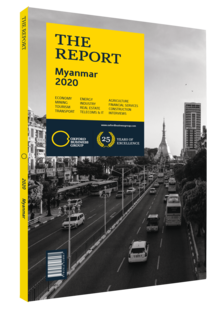Ken Tun, CEO, Parami Energy Group of Companies: Interview

Interview: Ken Tun
How do you foresee the evolution of the liquefied petroleum gas (LPG) retail market?
KEN TUN: As we are beginning from such a low starting point, growth of the LPG market will be very strong. For instance, Thailand’s LPG consumption is 40 times that of Myanmar. The relevance of LPG to the market is also high. Biomass has been used extensively for fuel, which has contributed to significant deforestation around residential areas. LPG, however, is a natural replacement. Some 30% of the population lives in an urban area, and this high-density market is low-hanging fruit for LPG. This will have the added benefit of working to relieve cooking-related electricity demand in cities. However, to maintain more stable demand, it is vital that we reach rural areas where 70% of people live. Before this can happen, the supply-chain infrastructure must be improved. Distribution and storage facilities are underdeveloped and significantly add to the cost of delivering LPG. In addition, the import terminal infrastructure is lacking, partially due to the small number of firms operating in the sector.
Where do you identify the need for improvements within the LPG ecosystem?
TUN: In the past, the government restricted licences in the market. However, this is now changing, with increased value being placed on competition. Competition in general is positive, but policymakers must ensure that this does not result in a race to the bottom. LPG specifically appeals to a very price-sensitive consumer segment, while at the same time having stringent health and safety requirements that present real risk if compromised even slightly. Price competition has led to compromising safety in the past – this is a chief concern of the segment. There are some practices that can be changed very quickly that will help improve the safety ecosystem surrounding LPG. Examples of this are the ban on and enforcement of importing used cylinders, the creation of handling certification standards and ensuring that the filling of cylinders is a separate business from the retail side.
In neighbouring countries, educational initiatives headed by the government and private sector have proven effective in ensuring safe use. In addition to this, it is important for the market to have international players to create a benchmark of quality. Elsewhere, LPG has been successfully utilised in India in reducing the cost and pollution associated with petrol in the automotive segment. To help encourage this, India provided incentives such as import tax breaks. As the rate of urbanisation continues, it is an example that Myanmar would do well to consider.
What role will mini-grid systems and other localised generation and transmission technologies play in meeting the target of 100% electrification by 2030?
TUN: There are a good number of innovative energy projects in the pipeline, but there is slow progress in completing them. Large-scale initiatives rely on the national grid, but the infrastructure is often underdeveloped and does not reach many of the communities in need. We can build a coal power plant, but if the power it generates cannot reach these communities, then it is not the right approach. One answer to this challenge is mini-grids, which is a bottom-up and private sector-led approach to electrification. The configuration of minigrids tends to first favour renewables. Solar is particularly effective, but Myanmar can also utilise hydropower and some wind power – with diesel or LPG acting as a reserve. The best approach is a combination of inputs, so that consumers in the rural Ayeyarwady Region, for example, enjoy the same reliability in electricity supply as those in Yangon. The challenge for mini-grids is that they may not appear commercially viable. It is true the energy provided will not be able to beat the heavily subsidised tariffs from the state. There is not a proven route to success for us to follow, so the success shown here can act as a model for other emerging markets.
You have reached the limit of premium articles you can view for free.
Choose from the options below to purchase print or digital editions of our Reports. You can also purchase a website subscription giving you unlimited access to all of our Reports online for 12 months.
If you have already purchased this Report or have a website subscription, please login to continue.

